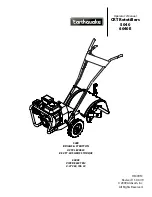
19
PH: 715-682-4622
Hub Service
Maintenance Schedule
•
Daily visual inspection
•
Thorough inspection for leaks or damage every
300 hours of operation
•
5 pumps of grease every 300 hours of operation
•
Thorough cleaning, inspection, and repacking
every 1,500 hours of operation
The bearings within the hubs of the disc harrow are fully greased with a Mobilith
SHC™ 460
grease at the factory. Ashland uses a special bearing grease packer to ensure the bearing is
effectively and evenly lubricated. Generous amounts of additional grease are added on both
sides of the bearing prior to install within the hub.
Mobilith
SHC™ 460
Mobilith
SHC™ Series high
-performance, lithium complex synthetic greases are developed to protect
equipment in severe applications operating at extreme temperatures. Their excellent adhesion,
structural stability, and resistance to water conditions found in wet environments make them
suitable for use in a wide variety of machinery and components. This grease exhibits excellent wear,
rust, and corrosion protection, to help with mechanical efficiency, enhance bearing and equipment
life, and extended grease life. Resulting in reduced maintenance costs, energy consumption,
starting torque, and provided protection at high and low temperatures.
Reinstalling Hubs
Before installing or re-installing the hub, follow this procedure to ensure spindle machined surfaces
are clean and undamaged.
•
Remove old lubricant and thoroughly clean spindle.
•
Inspect machined spindle seal surface for nicks, scratches, burrs or marks. If needed, use crocus
cloth or emery cloth to repair damaged areas.
•
Clean spindle threads thoroughly with a wire brush to avoid false bearing adjustments and to
avoid introduction of contaminates into the hub.
•
Thoroughly clean spindle machined surfaces of rust, dirt, grease, or other contaminants that
could damage the hub seal and cause it to leak.
Caution
Too much grease volume (over-greasing) in a bearing cavity will cause the rotating bearing elements
to begin churning the grease, pushing it out of the way, resulting an increase of bearing component
temperatures. This leads to rapid oxidation (chemical degradation) of the grease as well as an
accelerated rate of oil bleed, which is a separation of the oil from the thickener. The heat that has
been generated over time along with the oil bleed eventually will cook the grease thickener into a
hard, crusty build-up that can impair proper lubrication and even block new grease from reaching
the core of the bearing. This can result in accelerated wear of the rolling elements and then
component failure.





































